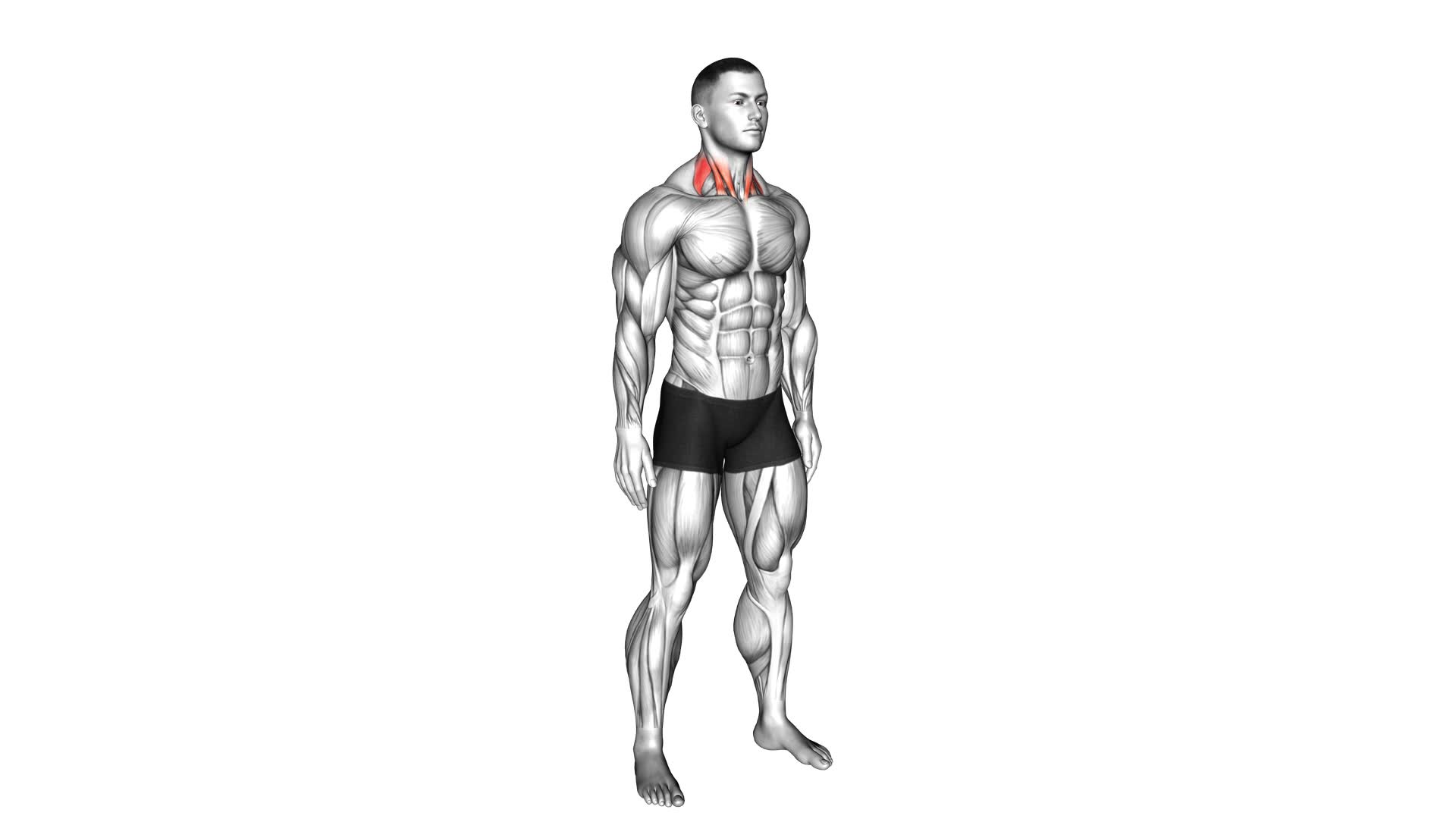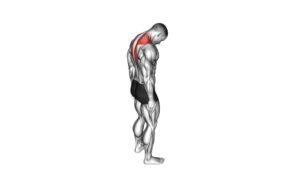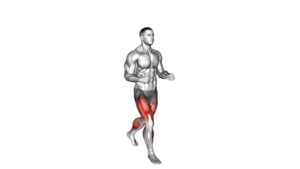Backward Forward Turn to Side Neck Stretch – Video Exercise Guide & Tips

Are you looking for a quick and effective way to relieve tension in your neck? Look no further than the Backward Forward Turn to Side Neck Stretch.
Watch This Exercise Video
In this video exercise guide, we'll show you the proper form and technique to perform this stretch safely. Whether you're a beginner or advanced fitness enthusiast, there are modifications and variations to suit your level.
Maximize the effectiveness of this stretch with our expert tips. Get ready to feel the tension melt away!
Key Takeaways
- The backward forward turn to side neck stretch improves flexibility and reduces neck pain.
- This stretch targets muscles in the neck and upper back, enhancing range of motion.
- Proper form and technique include maintaining head and neck alignment and avoiding common mistakes such as tucking the chin too much or looking up too high.
- It is important to avoid overstretching by maintaining proper head alignment, moving gently and smoothly, and being mindful of the body's limits.
Benefits of the Backward Forward Turn to Side Neck Stretch
To fully understand the benefits of the Backward Forward Turn to Side Neck Stretch, it's important that you incorporate this exercise into your routine. This stretch is highly effective in improving flexibility and reducing neck pain.
By performing the Backward Forward Turn to Side Neck Stretch regularly, you can significantly enhance the range of motion in your neck. This exercise targets the muscles in your neck and upper back, helping to release tension and tightness. As a result, you'll experience increased flexibility, making it easier to perform daily activities that involve neck movements.
Additionally, this stretch is particularly beneficial for individuals who suffer from neck pain. The Backward Forward Turn to Side Neck Stretch helps to alleviate discomfort by stretching and strengthening the muscles in your neck. It also promotes better blood circulation, which can further reduce pain and stiffness.
Incorporating this exercise into your routine is simple. Start by sitting or standing with good posture. Slowly tilt your head backward, then forward, and finally turn it to one side. Hold each position for a few seconds while maintaining a gentle stretch. Repeat on the other side and continue alternating for a few repetitions.
Proper Form and Technique for the Stretch
To properly perform the Backward Forward Turn to Side Neck Stretch, follow these guidelines for correct form and technique:
- Start by sitting or standing with your spine straight and your shoulders relaxed. Ensure that your head and neck are aligned with your spine, keeping your chin parallel to the ground.
- Slowly tilt your head backward, looking up towards the ceiling. Feel the stretch in the front of your neck and hold this position for about 10 seconds.
- Next, bring your head forward, tucking your chin towards your chest. You should feel the stretch in the back of your neck. Hold this position for another 10 seconds.
- Now, slowly turn your head to one side, bringing your ear towards your shoulder. Feel the stretch along the side of your neck. Hold for 10 seconds and then repeat on the other side.
Proper head and neck alignment is crucial during this stretch to avoid any strain or injury. Stretching helps improve flexibility, increases blood flow to the muscles, and promotes relaxation. By incorporating the Backward Forward Turn to Side Neck Stretch into your routine, you can relieve tension in your neck and improve overall neck mobility.
Now, let's move on to the next section where we'll discuss common mistakes to avoid during this stretch.
Common Mistakes to Avoid
When performing the backward forward turn to side neck stretch, it's crucial to pay attention to your head positioning. Incorrect positioning can lead to strain and discomfort in the neck.
Additionally, be cautious not to overstretch the neck muscles as this can cause injury.
Lastly, never neglect warm-up exercises before attempting this stretch to prepare your neck muscles for the movement.
Incorrect Head Positioning
Avoid placing your head in an incorrect position while performing the Backward Forward Turn to Side Neck Stretch. Proper head alignment is crucial to avoid neck strain and ensure the effectiveness of the exercise. Here are four common mistakes to avoid when positioning your head:
1) Tucking your chin too much: Keep your chin parallel to the ground and avoid tucking it too far down, as this can strain the neck muscles.
2) Looking up too high: While it's important to look forward, avoid tilting your head back excessively, as it can lead to overstretching the neck muscles.
3) Tilting your head to the side: Maintain a neutral head position and avoid tilting your head towards the shoulder you're stretching.
4) Letting your head fall forward: Keep your head in line with your spine and avoid letting it drop forward, as it can strain the neck and upper back.
By ensuring proper head positioning, you can avoid unnecessary strain and maximize the benefits of the stretch.
Now, let's discuss the next section on overstretching neck muscles.
Overstretching Neck Muscles
Maintaining proper head alignment is crucial in order to avoid overstretching the neck muscles while performing the Backward Forward Turn to Side Neck Stretch. Overstretching can lead to strain and injury, so it's important to be mindful of your body's limits.
When doing neck stretches or any stretching exercises, start by gently moving your head in the desired direction, making sure to maintain a neutral spine and not forcing the movement. Avoid jerky or sudden motions that can put excessive strain on the neck muscles. Instead, focus on performing the stretch slowly and smoothly, allowing the muscles to gradually lengthen and relax.
By being mindful of your head alignment and practicing proper technique, you can prevent overstretching and ensure a safe and effective stretching routine.
Now, let's discuss the importance of not neglecting warm-up exercises.
Neglecting Warm-Up Exercises
To prevent injury and maximize the effectiveness of your workout, it's important to prioritize warm-up exercises before engaging in the Backward Forward Turn to Side Neck Stretch. Neglecting warm-up exercises can lead to muscle strains, decreased flexibility, and increased risk of injury.
Here are four reasons why warming up is crucial before exercise:
- Increased blood flow: Warm-up exercises increase blood flow to your muscles, delivering oxygen and nutrients necessary for optimal performance.
- Improved flexibility: Proper warm-up routines can improve your range of motion and flexibility, allowing you to perform exercises with better form and efficiency.
- Enhanced muscle activation: Warming up activates the muscles in your neck, preparing them for the specific movements involved in the Backward Forward Turn to Side Neck Stretch.
- Injury prevention: Warm-up exercises help to loosen and warm up your muscles, reducing the risk of strains and other injuries during the main workout.
If you prefer alternatives to warm-up exercises for your neck muscles, consider gentle neck rotations, shoulder rolls, or neck stretches that target the specific muscles you'll be working.
Modifications and Variations for All Fitness Levels
Choose modifications and variations that suit your fitness level for the Backward Forward Turn to Side Neck Stretch exercise. It's important to adjust the intensity of the stretch to prevent injuries and maximize the benefits of the exercise.
For beginners or individuals with limited flexibility, start with gentle movements and gradually increase the range of motion as you become more comfortable. You can modify the exercise by performing smaller neck rotations or reducing the duration of the stretch.
As you progress, you can add resistance by placing a hand on the side of your head and applying gentle pressure to deepen the stretch. Additionally, you can incorporate neck stretches into your warm-up routine to prepare the muscles for more challenging exercises.
Remember to listen to your body and make modifications accordingly. By gradually increasing the intensity and range of motion, you can safely and effectively improve your neck flexibility and reduce tension in the muscles.
Tips for Maximizing the Effectiveness of the Stretch
To maximize the effectiveness of the stretch, consistently perform the Backward Forward Turn to Side Neck Stretch exercise with proper form and technique. Here are some tips to help you maximize flexibility and avoid injury:
- Warm up: Before starting the exercise, warm up your neck muscles with gentle movements such as neck rotations and side-to-side stretches. This will increase blood flow and prepare your muscles for the stretch.
- Engage your core: During the stretch, engage your core muscles to maintain stability and support your neck. This will help you maintain proper form and prevent unnecessary strain on your neck muscles.
- Gradually increase intensity: Start with gentle movements and gradually increase the intensity of the stretch as your muscles become more flexible. Avoid pushing yourself too hard, as this can lead to injury. Listen to your body and only go as far as feels comfortable.
- Breathe deeply: As you perform the stretch, remember to breathe deeply and relax. Deep breathing helps to release tension and promotes relaxation, allowing for a deeper and more effective stretch.
By following these tips, you can maximize the effectiveness of the Backward Forward Turn to Side Neck Stretch and minimize the risk of injury.
Now, let's move on to the next section where we'll discuss precautions and considerations for safe practice.
Precautions and Considerations for Safe Practice
Before starting the Backward Forward Turn to Side Neck Stretch, it's important to be aware of the precautions and considerations for safe practice. These guidelines will help ensure that you perform the stretch correctly and minimize the risk of injury.
First and foremost, always listen to your body. If you experience any pain or discomfort during the stretch, stop immediately. It's normal to feel a gentle stretch, but sharp or intense pain shouldn't be ignored.
Additionally, make sure to warm up your neck muscles before attempting the stretch. This can be done by gently moving your head side to side and up and down. Warming up will help increase flexibility and reduce the risk of straining the muscles.
Maintaining proper form is crucial for safe practice. Throughout the stretch, keep your neck and spine aligned and avoid any twisting or jerking movements. Remember to breathe deeply and relax your shoulders.
Lastly, it's important to gradually increase the intensity and duration of the stretch over time. Start with shorter holds and gradually work your way up to longer stretches. This will allow your muscles to adapt and prevent overexertion.
Frequently Asked Questions
Can the Backward Forward Turn to Side Neck Stretch Help With Reducing Headaches?
Yes, the backward forward turn to side neck stretch can help reduce headaches.
By stretching the neck muscles and improving flexibility, this exercise can provide headache relief. It targets the muscles that often contribute to tension headaches and can help alleviate neck pain as well.
Incorporating this stretch into your routine can be beneficial in managing headaches and promoting overall neck health.
Is It Safe to Perform the Stretch if I Have a Neck Injury or Chronic Neck Pain?
If you have a neck injury or chronic neck pain, it's important to take precautions before performing the backward forward turn to side neck stretch. This stretch may not be safe for you and could potentially worsen your condition.
It's recommended to consult with a healthcare professional or physical therapist who can provide guidance on alternative neck stretches that are more suitable for your specific situation.
How Often Should I Perform the Backward Forward Turn to Side Neck Stretch for Optimal Results?
To achieve optimal results, it's important to perform the backward forward turn to side neck stretch regularly. While frequency recommendations may vary based on individual needs, it's generally recommended to incorporate this stretch into your daily stretching routine.
This stretch can provide numerous benefits, including improved flexibility, increased range of motion, and relief from neck tension and discomfort. Consistency is key, so make sure to prioritize this stretch in your daily routine.
Can the Stretch Help Improve Posture and Reduce Neck and Shoulder Tension?
The backward forward turn to side neck stretch is a great exercise for improving posture and reducing neck and shoulder tension. By stretching the muscles in your neck and shoulders, this exercise can help relieve tightness and promote better alignment.
Regularly performing this stretch can lead to improved posture and reduced tension in your neck and shoulders. Incorporating this exercise into your routine can be beneficial for overall neck and shoulder health.
Are There Any Specific Breathing Techniques That Should Be Used During the Stretch?
During the stretch, it's important to focus on your breathing techniques. Taking deep breaths in and out can help relax your muscles and enhance the effectiveness of the stretch.
As you perform the Backward Forward Turn to Side Neck Stretch, make sure to inhale deeply before starting the movement and exhale as you turn your head to the side. This will help you maintain control and avoid any unnecessary tension.
For beginners, it's recommended to start with smaller movements and gradually increase the range of motion.
Conclusion
In conclusion, the backward forward turn to side neck stretch is a beneficial exercise for improving neck flexibility and relieving tension.
By following proper form and technique, and avoiding common mistakes, this stretch can be modified to suit all fitness levels.
To maximize its effectiveness, it's important to listen to your body, take precautions, and practice safely.
Incorporating this stretch into your routine can help promote better neck health and overall well-being.

Author
Years ago, the spark of my life’s passion ignited in my mind the moment I stepped into the local gym for the first time. The inaugural bead of perspiration, the initial endeavor, the very first surge of endorphins, and a sense of pride that washed over me post-workout marked the beginning of my deep-seated interest in strength sports, fitness, and sports nutrition. This very curiosity blossomed rapidly into a profound fascination, propelling me to earn a Master’s degree in Physical Education from the Academy of Physical Education in Krakow, followed by a Sports Manager diploma from the Jagiellonian University. My journey of growth led me to gain more specialized qualifications, such as being a certified personal trainer with a focus on sports dietetics, a lifeguard, and an instructor for wellness and corrective gymnastics. Theoretical knowledge paired seamlessly with practical experience, reinforcing my belief that the transformation of individuals under my guidance was also a reflection of my personal growth. This belief holds true even today. Each day, I strive to push the boundaries and explore new realms. These realms gently elevate me to greater heights. The unique combination of passion for my field and the continuous quest for growth fuels my drive to break new ground.



